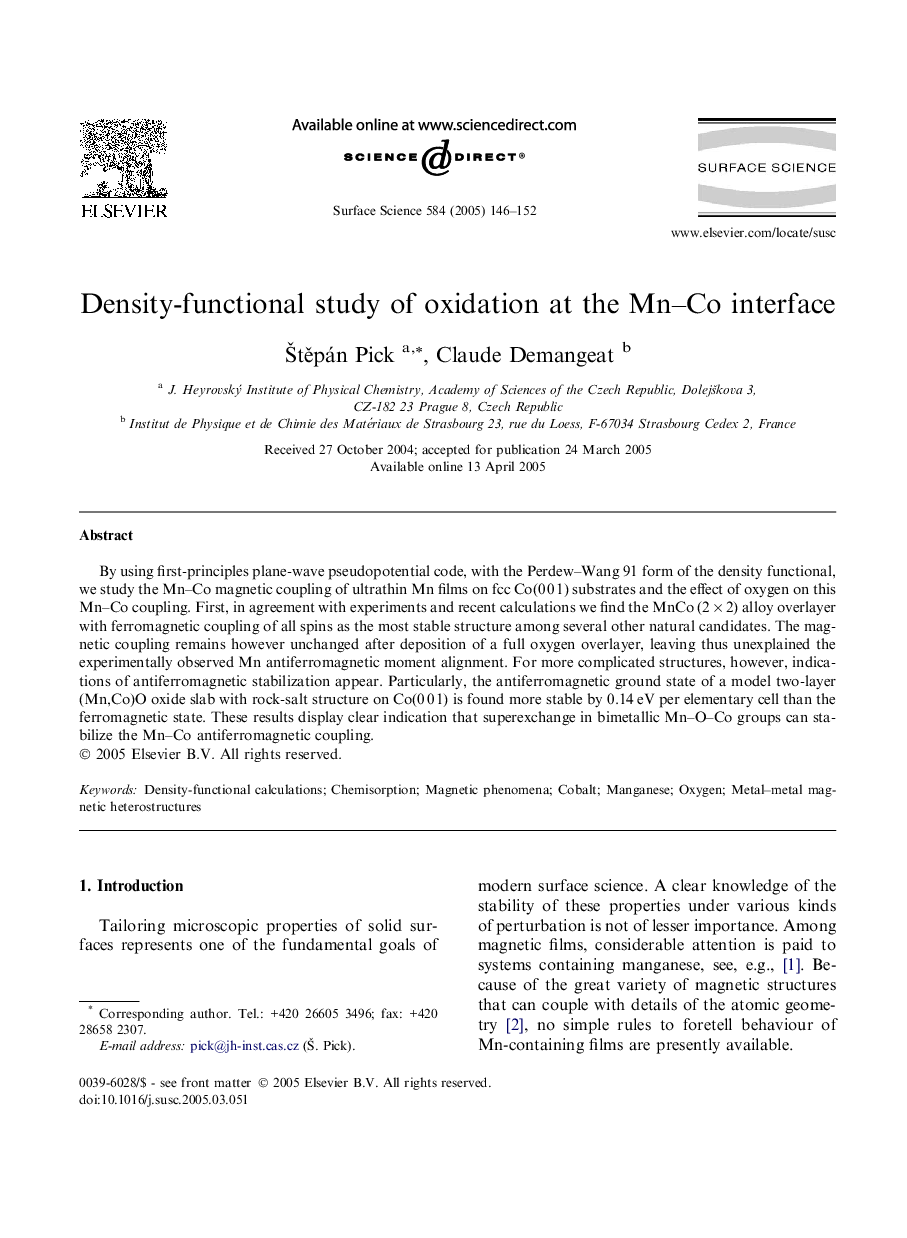| Article ID | Journal | Published Year | Pages | File Type |
|---|---|---|---|---|
| 9594659 | Surface Science | 2005 | 7 Pages |
Abstract
By using first-principles plane-wave pseudopotential code, with the Perdew-Wang 91 form of the density functional, we study the Mn-Co magnetic coupling of ultrathin Mn films on fcc Co(0Â 0Â 1) substrates and the effect of oxygen on this Mn-Co coupling. First, in agreement with experiments and recent calculations we find the MnCo (2Â ÃÂ 2) alloy overlayer with ferromagnetic coupling of all spins as the most stable structure among several other natural candidates. The magnetic coupling remains however unchanged after deposition of a full oxygen overlayer, leaving thus unexplained the experimentally observed Mn antiferromagnetic moment alignment. For more complicated structures, however, indications of antiferromagnetic stabilization appear. Particularly, the antiferromagnetic ground state of a model two-layer (Mn,Co)O oxide slab with rock-salt structure on Co(0Â 0Â 1) is found more stable by 0.14Â eV per elementary cell than the ferromagnetic state. These results display clear indication that superexchange in bimetallic Mn-O-Co groups can stabilize the Mn-Co antiferromagnetic coupling.
Keywords
Related Topics
Physical Sciences and Engineering
Chemistry
Physical and Theoretical Chemistry
Authors
Å tÄpán Pick, Claude Demangeat,
